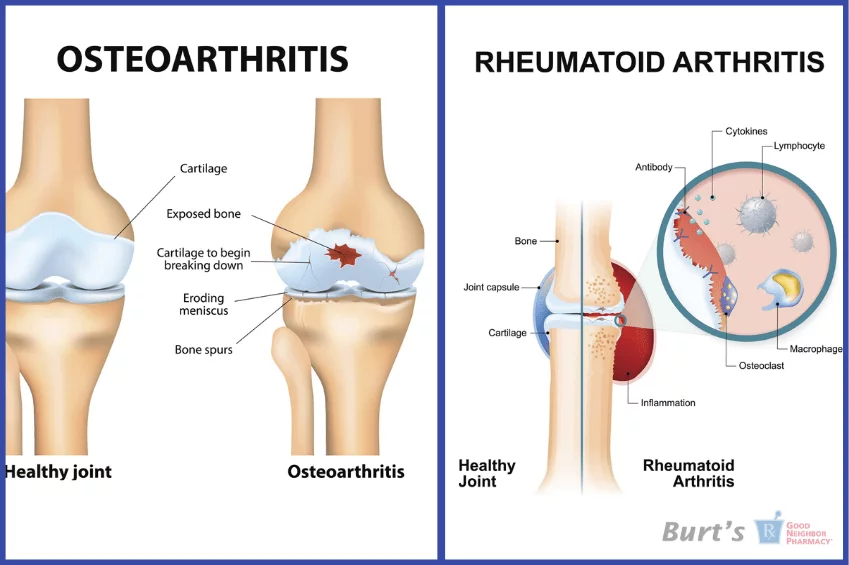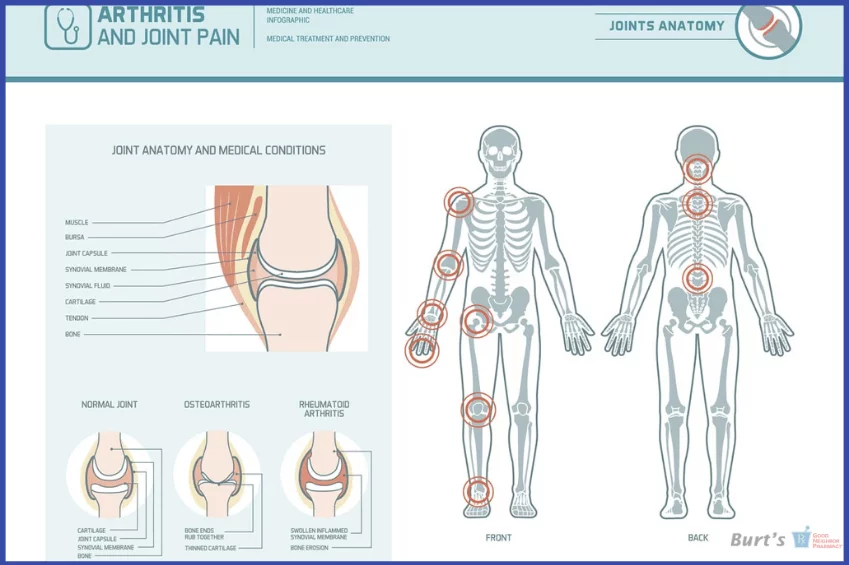
Brace yourself – winter is coming, and arthritis pain is right behind it; luckily, if you’re suffering, there are ways to ease arthritis pain during the cold winter months.
The reality for millions of sufferers is that cooler months often cause an increase in symptoms; for some, the change is so severe that the holiday season invokes feeling of dread.
If this is the case for you, take heart. You don’t have to suffer alone in silence or lock yourself indoors until springtime arrives. We’ll explain what science has to say about why this happens, and what you can do to ease your pain, in today’s post.
Why Does Winter Exacerbate Arthritis Pain?
It isn’t clear exactly why winter seems to have such an impact on arthritis and other auto-immune diseases, but the answer probably involves changes in:
- Pressure
- Temperature
- Humidity
- Light
All of these can have subtle effects on the body’s ability to control inflammation and circulation. Below, we’ll go into each of these variables in detail.
1. Low Pressure
Low pressure systems (snowstorms, rainstorms, and cloudy weather) have been shown to affect joint cartilage and synovial fluid, causing joints to expand. This, in turn, changes how the joint moves and interferes with stability. Over time, this can lead to additional wear and tear or even permanent damage of joints.
2. Low Temperatures
Cold temperatures, on the other hand, thicken synovial fluid between the joints. This slows movement and limits range of motion. That’s probably why people with arthritis seem to take longer to get moving each day over the winter months.
3. Light: a Lack of Vitamin D
A lack of vitamin D, which is common in the winter due to lack of exposure to sunlight, has been shown to increase joint pain and stiffness. It can also sap bone density, which raises your risk for injuries like dislocations and fractures.
4. It’s In Your Genes
In some cases, winter’s negative effects might even come down to your genes. Some people experience an activation of genes that increase inflammation in cooler months; others don’t seem to be affected at all. Because arthritis itself is genetic, you’re far more likely to suffer this problem if you’re diagnosed with it.
How to Regain Control and Ease Arthritis Pain
Now that you understand the physiology a little bit better, let’s get to the meat of the problem: what can you do about it?
Can you ease arthritis pain? How can you offset the negative effects of winter on your arthritis and get back to the business of loving life? The answer is yes.
1. See Your Doctor
A change in symptoms should always prompt a visit to your doctor to rule out outside influences or shifts in your disorder. An increase in pain, swelling, or stiffness could also be a sign that your arthritis is becoming more severe. By assuming winter is the only influence, you might inadvertently miss these important warning signs.
Your doctor can run simple tests to re-evaluate you and get an idea of how (or even if) your condition is progressing. They might even recommend:
- Physiotherapy
- A change in medication
- Simple strategies for finding relief right at home
2. Get Moving
Tell someone in the middle of an arthritis flare that they need to go take a walk and you might find yourself facing a particularly rude gesture. But that’s still often good advice – even if it doesn’t feel that way at the time.
Physical activity increases circulation in and around the joint, which:
- Lowers inflammation and helps move out excessive fluid build up
- Increases muscle strength and makes the joint more stable, lowering the risk for injury
Most experts recommend light range-of-motion exercises (e.g., stretching or yoga) to start. Gentle aerobics (such as Tai Chi, swimming, or using an elliptical machine) can also be beneficial; just ask your doctor if they’re safe for you first.
But that doesn’t mean you should run out and go for a jog. Exercise should be gentle; don’t rush it, and don’t push yourself through pain just to get it done.
Most importantly, avoid putting your body at risk for additional injuries. If you’re in the middle of a flare right now, or you are starting an exercise regimen for the first time, you may need a specialized approach. Ask your pharmacist for more information.
3. Use Heat
If cooler weather is increasing stiffness and pain for you, adding a little more heat might help to ease arthritis pain and get you back on track. There’s a few ways you can do this.
- Increase the temperature in your home by 1 to 2 degrees and see if it makes any difference in how you feel each morning. Increasing or decreasing humidity may make a difference, too.
- Soak those pains away with a hot bath. Warm water is soothing and helps to improve circulation in and around the joint. For extra effect, add a cup of Epsom salts. Magnesium can help relieve spasms and muscle soreness.
- If you have trouble with your hands or feet, tuck a set of hand warmers inside your gloves or boots before you head outdoors. Wear good, warm gloves, and avoid exposing your fingers unless it’s absolutely necessary.
- Suffering from back pain and stiffness during your morning commute? Install a seat warmer with massagers into your vehicle. Turn it on each morning and let the soothing vibrations and warmth loosen you up before you get to work.
- Grab a hot drink – literally. If you have arthritis in your hands, holding a warm tea or hot cocoa can be a great way to stave off stiffness and pain from the cold. It’s the perfect excuse to indulge!
4. Try Compression
Compression works by putting pressure on or around the joint; this traps heat while also preventing swelling and fluid build-up. Depending on which area of the body you compress (e.g., leg, ankle, wrist), it can also help circulation. All of these have a direct effect on the symptoms of arthritis.
Try wearing compression socks, gloves, and armbands to ease arthritis pain in the lower legs, ankles, wrists, and forearms. You can also experiment with wearing a layer of tighter-fitting, stretchy clothing instead if it’s easier for you.
Have a particularly cantankerous joint? Wrap it or wear an elastic brace over it instead. Not only will this grant you all of the above benefits, but you’ll also increase the joint’s stability and help to prevent injuries, too.
5. Wear Traction Shoes
Sometimes, what you need most is a little extra support throughout the winter. If arthritis makes you feel unsteady and unstable, a good pair of high-traction shoes may help you prevent accidents. Being more stable as you walk will also improve your gait; this helps to prevent you from overcompensating with healthy joints.
6. Try a Cane
If you have arthritis in your legs, lower back, or ankles, and you often find it painful to walk, using a cane might help. It works by taking pressure off of the affected joint and redistributing it elsewhere (usually into the cane and/or your arms). In some cases, this might make it easier and more comfortable to get moving.
7. Take More Vitamin D
We mentioned that a lack of vitamin D can lead to joint stiffness, pain, and inflammation. It can also make you more sensitive to pain, too – and that’s bad news for arthritis sufferers.
To combat this, increase the amount of Vitamin D in your diet. Ask your pharmacist to recommend a supplement; this is the easiest and most reliable option. All you have to do is take them regularly for a few weeks to get levels back to normal.
You can also try adding D-rich food sources to your diet. Oily fish (salmon, trout, mackerel), orange juice, milk, breakfast cereals, and oatmeal are all good choices.
Conclusion
Arthritis flare-ups are more common during the winter months, and many of those suffering claim their pain is much worse in the cold.
If you are looking to ease arthritis pain, try these 7 tips. If you’re looking for more information, contact one of our Burt’s Pharmacy locations today!

 info@burtsrx.com
info@burtsrx.com


